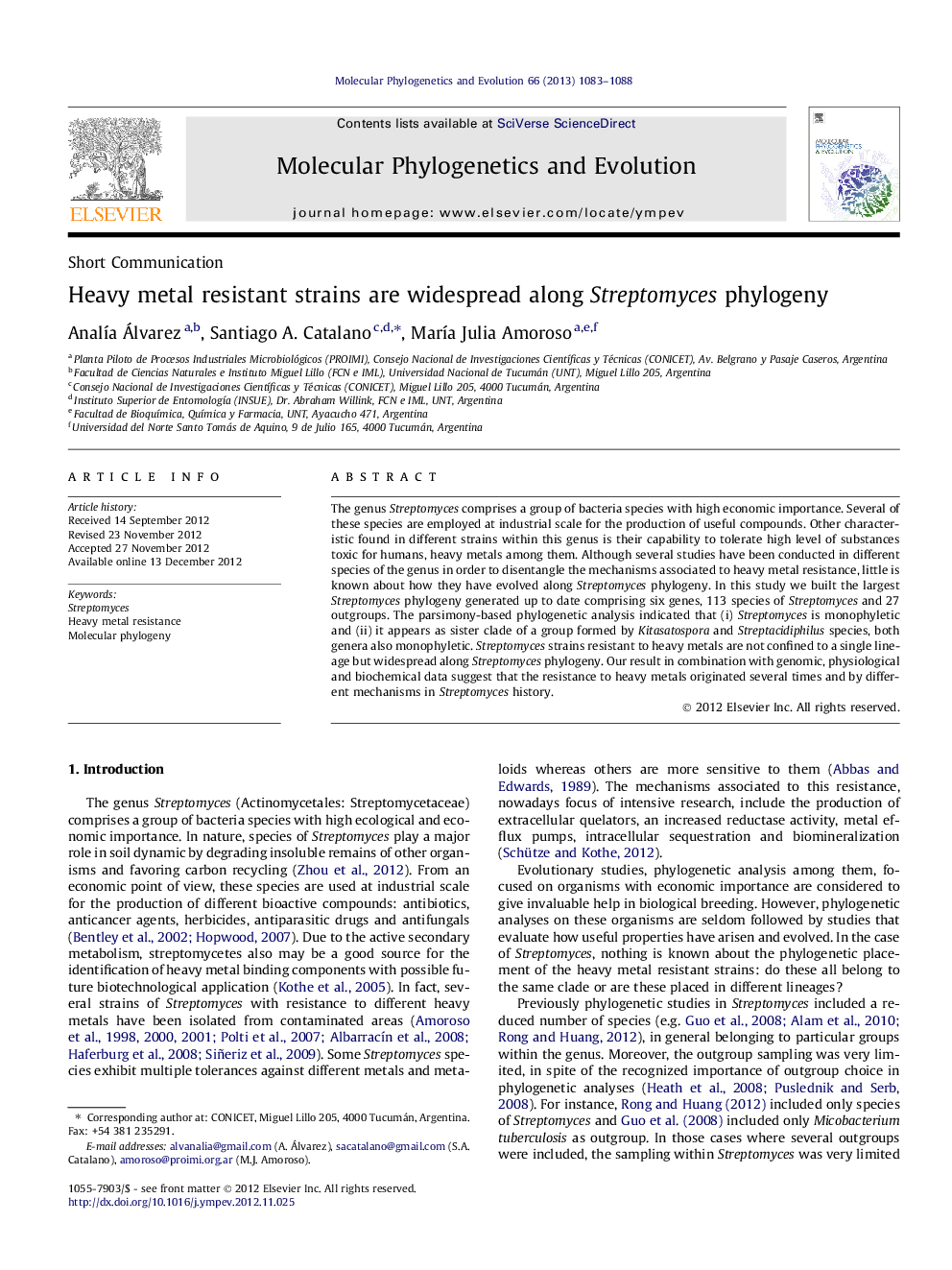| Article ID | Journal | Published Year | Pages | File Type |
|---|---|---|---|---|
| 2833978 | Molecular Phylogenetics and Evolution | 2013 | 6 Pages |
The genus Streptomyces comprises a group of bacteria species with high economic importance. Several of these species are employed at industrial scale for the production of useful compounds. Other characteristic found in different strains within this genus is their capability to tolerate high level of substances toxic for humans, heavy metals among them. Although several studies have been conducted in different species of the genus in order to disentangle the mechanisms associated to heavy metal resistance, little is known about how they have evolved along Streptomyces phylogeny. In this study we built the largest Streptomyces phylogeny generated up to date comprising six genes, 113 species of Streptomyces and 27 outgroups. The parsimony-based phylogenetic analysis indicated that (i) Streptomyces is monophyletic and (ii) it appears as sister clade of a group formed by Kitasatospora and Streptacidiphilus species, both genera also monophyletic. Streptomyces strains resistant to heavy metals are not confined to a single lineage but widespread along Streptomyces phylogeny. Our result in combination with genomic, physiological and biochemical data suggest that the resistance to heavy metals originated several times and by different mechanisms in Streptomyces history.
Graphical abstractFigure optionsDownload full-size imageDownload as PowerPoint slideHighlights► We obtained a well resolved phylogeny of Streptomyces based on six genes. ► We studied the phylogenetic position of Streptomyces heavy metals resistant strains. ► Resistant strains were widespread distributed along Streptomyces phylogeny. ► Heavy metal resistance probably evolved several times in this genus.
